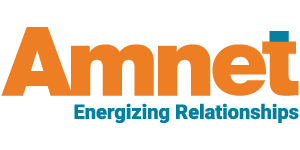[Approximate Reading Time : 4 mins]
Humans’ working memory functions much like that of a computer, holding instructions and information for processing. When our working memory is challenged by extraneous information, it is called cognitive load. Every person, whether or not they are working with disabilities, experiences a limit to the cognitive load they can experience without impacting their ability to learn. Reducing the extraneous cognitive load to assist the transition of acquired data from working memory to long-term memory is a hurdle that educational publishing must always clear to allow content to be absorbed in a useful and meaningful way.
What Creates Cognitive Load?
Three primary factors add to cognitive load:
- Abundance of choices
- Excessive thought required for action
- Unclear instructions
When there is too much information, it creates a “split attention effect.” When there are too many competing visual examples or verbal explanations, the observer’s mental processing is split between multiple sources instead of absorbing a single consistent stream of information.
How Can You Minimize Cognitive Load?
Education publishing relies on students’ ability to process multimedia materials efficiently and effectively. Choices should be minimized, unnecessary elements should be eliminated and design choices should follow established patterns; in addition, iconography should be used sparingly along with easily digestible alt text. There are several useful strategies to help reduce cognitive load
Remove Distractions
No matter how compelling content maybe, too much of it can distract from the intended message. Clear out the extraneous material or “weeding” can bring the focus back to the information at hand instead of diverting mental processing to unnecessary data. The same is true for visual aids like photos or icons. Alt text should be presented quickly and simply, and it should not make assumptions concerning prior knowledge.
Be Concise
For the most effective communication, eliminate elaborate writing styles and overly wordy or unclear instructions. Utilize summaries to drive the message home and expedite the transition of information to long-term memory.
Use Collaborative Learning Techniques
Cognitive load theory posits that collaborative learning becomes increasingly more effective than individual learning as the content becomes more complex. Educational publishing can leverage this method by presenting difficult assignments as a team or group effort. The idea is that multiple learners can increase each other’s understanding of demanding material through discussion and focused teamwork.
For more information on techniques, education publishing can employ to reduce cognitive load, contact Amnet today. Call or go online to learn more about their full range of publishing services.
Sources:
1. https://www.psychologistworld.com/memory/cognitive-load-theory
2. https://jonyablonski.com/articles/2015/design-principles-for-reducing-cognitive-load/
3. http://theelearningcoach.com/learning/reduce-cognitive-load/
4. https://www.researchgate.net/publication/253772914_Nine_Ways_to_Reduce_Cognitive_Load_in_Multimedia_Learning


